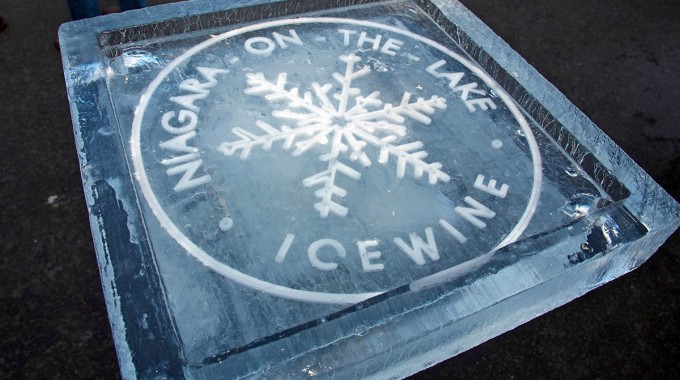There is a startling sweetness in the darkest, coldest days of winter – and you’ll find it at the 2012 Niagara Icewine Festival
Running from January 13 to 29, the Ice Wine Festival is one of the high points of the oenophile’s year – a chance to savor the liquid gold produced by Niagara’s last deeply frozen harvest.
Come raise a glass – and your spirits!
Icewine, made only in a few locations around the world, is one of Niagara’s most famous wine specialties. Grapes are left on the vines long after the rest of the harvest has been completed. Covered with fine netting to ward off marauding birds and animals, the fruit repeatedly freezes and thaws, becoming dehydrated. This process concentrates the acids and sugars and greatly adds to the complexity of the wine they will become. Icewine grapes are picked entirely by hand, after the temperature has settled between 10C-13C below, and are pressed immediately. Because the grapes are pressed while still frozen, the water in the fruit remains in the form of ice crystals in the skins. Only a tiny, highly concentrated drop of juice is actually squeezed out to become icewine – approximately one-fifth of the juice a normal grape would produce. While a vine of grapes is normally enough to produce a whole bottle of wine, you’ll get just a single glass from the same number of icewine grapes.
Although there’s some evidence that the Romans sipped a wine made from frozen grapes, the icewine tradition began in earnest in Franconia, Germany in the late 1700’s when the sudden onset of a cold winter froze grapes on the vine, forcing the startled winemakers to work with what nature had produced or lose the harvest altogether. That happy cold snap produced wine so delicious that as years passed, winemakers made sure to leave some grapes to freeze. Today, Germany and Canada are the largest producers of icewine in the world, with 75 percent of Canada’s contributions coming from Ontario.
According to the experts, the best icewine should be intensely sweet with hints of mango, peach and tropical fruits, but with a clean, dry finish and a nose that suggests lychee nuts. Typically made from Vidal Blanc, Seyval Blanc, and Reisling grapes, icewine can also be created using Cabernet Franc, which produces a light pink colour, like a Rosé wine.
To understand the appeal of icewine, you need to taste it – and that’s why you should plan a weekend visit to the 2012 Icewine Festival. At this time of year, it’s the only way that ice is nice!




Leave a Comment